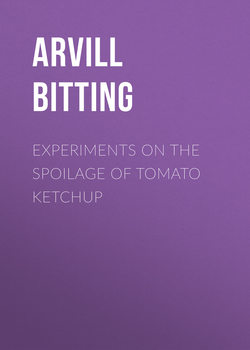Читать книгу Experiments on the Spoilage of Tomato Ketchup - Arvill Wayne Bitting - Страница 4
LABELS
ОглавлениеThe labels on the ketchup bottles have been improved somewhat in the last year as regards exactness in describing the contents. Formerly, according to the labels, much of the ketchup was made from whole ripe tomatoes. The question was, What became of the enormous amount of ketchup which it was known had been made from “trimmings?” On this year’s ketchup the labels make fewer claims, generally merely stating that it is “tomato ketchup,” which is true whether made from whole tomatoes or refuse. The brand is in most cases the guaranty for good quality. It is not safe to judge the quality by the price, for, though usually good quality can not be expected unless the higher price is paid, some of the high-priced ketchup when placed under the microscope has proven to be a very inferior product.
The wide labels on the neck of the bottle are objectionable. Some of these are 2 inches in height, and serve to cover the discolored and spoiled ketchup. As spoilage begins usually in the neck of the bottle, it is difficult to see it when the neck is wrapped with a label, and thus it might easily be overlooked until the main body of the ketchup is affected. The bottles which have the widest labels around the neck are usually the ones provided with one or two large labels on the lower part of the bottle, though some bottles have no other label but the one around the neck. As a rule, however, these are narrow, close to the stopper, and unobjectionable.
In buying ketchup for experimental purposes it was difficult and sometimes impossible to learn its age, as often the grocer does not know it, and at other times he will not tell. It appeared, however, that often the ketchup had been on the grocer’s shelf or in the warehouse from one to four years.
